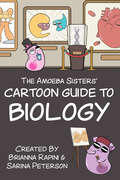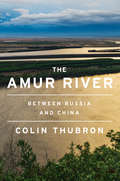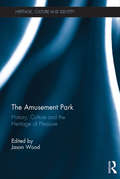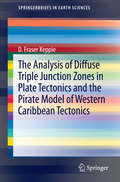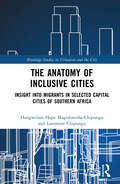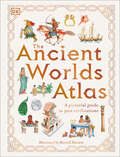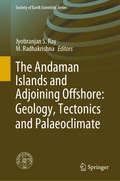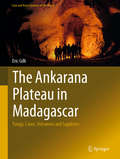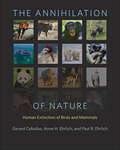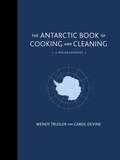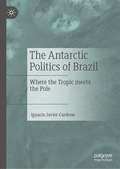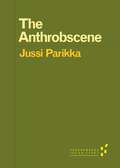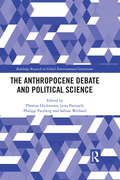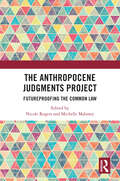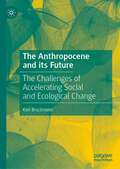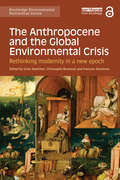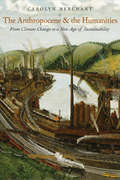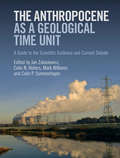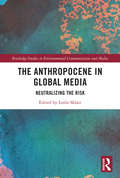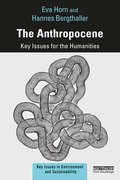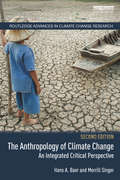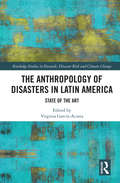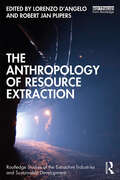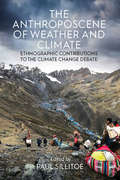- Table View
- List View
The Amoeba Sisters' Cartoon Guide to Biology
by Brianna Rapini Sarina Peterson24 Major Biology Topics You Should KnowExplore the wonders of biology inside and outside of the classroom with The Amoeba Sisters’ Cartoon Guide to Biology. Science facts made easy. From the dynamic sister duo behind the beloved Amoeba Sisters YouTube channel, this visual learning book features 24 major educational concepts commonly taught in life sciences courses. Designed to alleviate the intimidation often associated with complex science concepts, this guide employs amusing mnemonics, real-world examples, and light-hearted humorous anecdotes to make biology topics more approachable and relatable.Designed for anyone studying biology. Whether you’re a high school student, a college scholar, or a curious biology enthusiast, this book ensures that learning biology remains engaging and accessible for all ages to enjoy. This book tackles topics students often find difficult, such as cell transport, cellular respiration, protein synthesis, DNA replication, mitosis, and meiosis, with each chapter addressing stumbling blocks they may encounter in the classroom or during study prep. Whether used as an introduction to a concept or to recap a lesson, this book also makes a great supplement to your biology textbook as a classroom set.Pairs well with any biology course.Illustrations, diagrams, and cartoons break down complex biology conceptsShort chapters provide a biology foundation in the style of Amoeba Sisters videosUseful for teachers and students, includes objectives at end of each chapter to help with test preparationGlossary of over 250 biology vocabulary words with easy-to-understand, brief definitionsSo if you enjoy teen and kid science books such as Physics for Curious Kids, Awesome Facts That Will Make You Look Super Smart, or Noah’s Fascinating World of STEAM Experiments, then you’ll love The Amoeba Sisters’ Cartoon Guide to Biology.
The Amur River: Between Russia and China
by Colin ThubronThe most admired travel writer of our time—author of Shadow of the Silk Road and To a Mountain in Tibet—recounts an eye-opening, often perilous journey along a little known Far East Asian river that for over a thousand miles forms the highly contested border between Russia and China.The Amur River is almost unknown. Yet it is the tenth longest river in the world, rising in the Mongolian mountains and flowing through Siberia to the Pacific. For 1,100 miles it forms the tense border between Russia and China. Simmering with the memory of land-grabs and unequal treaties, this is the most densely fortified frontier on earth. In his eightieth year, Colin Thubron takes a dramatic journey from the Amur’s secret source to its giant mouth, covering almost 3,000 miles. Harassed by injury and by arrest from the local police, he makes his way along both the Russian and Chinese shores, starting out by Mongolian horse, then hitchhiking, sailing on poacher’s sloops or travelling the Trans-Siberian Express. Having revived his Russian and Mandarin, he talks to everyone he meets, from Chinese traders to Russian fishermen, from monks to indigenous peoples. By the time he reaches the river’s desolate end, where Russia’s nineteenth-century imperial dream petered out, a whole, pivotal world has come alive. The Amur River is a shining masterpiece by the acknowledged laureate of travel writing, an urgent lesson in history and the culmination of an astonishing career.
The Amusement Park: History, Culture and the Heritage of Pleasure (Heritage, Culture and Identity)
by Jason WoodJason Wood is Director of Heritage Consultancy Services, Lancaster, UK, and former Professor of Cultural Heritage at Leeds Metropolitan University, UK.
The Analysis of Diffuse Triple Junction Zones in Plate Tectonics and the Pirate Model of Western Caribbean Tectonics
by D. Fraser KeppieModern researchers in plate tectonics may be concerned with the analysis of distributed deformation across diffuse plate boundaries and triple junction zones. This book extends classic methods of kinematic analysis first developed in the 1960s to the more general scenarios of diffuse deformation zones between plates. The analytic methods presented specifically target the non-rigid deformation implied by unstable triple junction configurations. These methods are then applied to the tectonic evolution of western Caribbean region which provides new ways to test and challenge the established Pacific model of Caribbean tectonics. Possible advantages of the new Pirate model of Caribbean tectonics are discussed in terms of paleo-geography and paleo-ocean connections, as well as mineral and hydrocarbon potential and seismic risks across the region.
The Anatomy of Inclusive Cities: Insight into Migrants in Selected Capital Cities of Southern Africa (Routledge Studies in Urbanism and the City)
by Lovemore Chipungu Hangwelani Hope Magidimisha-ChipunguCreating cities inclusive of immigrants in Southern Africa is both a balancing act and a protracted process that requires positive attitudes informed by accommodative institutional frameworks. This book revolves around two key contemporary issues that cities around the globe are trying to achieve – viz. the need to build inclusive cities and the need to accommodate immigrants. The search for building inclusive cities is an on-going challenge which most cities are grappling with. This challenge is complicated by the need to include immigrants who are always side-lined by policies of host countries. This book discusses the host–immigrant interface by providing a detailed insight of anchors of inclusive cities and a holistic picture of who immigrants are. These are then discussed contextually within the Southern African region, where insight into selected cities is provided to some depth using empirical evidence. The discussion on inclusive cities and immigrants is a universal narrative targeting practitioners and students in town and regional planning, urban studies, urban politics, migration and international relations. The Southern African region once more provides an opportunity to further interrogate and understand the dynamics of immigration in selected cities. This book will also be of interest to policy makers dealing with challenges of inclusivity in the light of immigrants.
The Ancient Worlds Atlas (DK Pictorial Atlases)
by DKFrom the first cities of Sumer to the empire of the Incas, travel around the world and through 5,000 years of history in this illustrated guide to see where and how ancient peoples lived.From North America to New Zealand, this book takes you on a trip around the world and through history to visit ancient cities and empires, showing who lived where and explaining the unique features of each civilization.The Ancient Worlds Atlas is a pictorial guide to past civilizations, covering big history topics for curious kids aged 9-12 years. What was it like to live in the crowded city of Rome? Why did the Egyptians build pyramids? When did Samurai warriors first ride into battle? How did sailors first navigate the Pacific Ocean? Which Chinese emperor has a palace with 1,000 bedrooms? Find out the answers to these fascinating questions and much more in this lavishly illustrated guide to past civilizations. This fascinating children&’s book about ancient civilizations contains: - A visual guide to where our forebears lived, putting their lifestyles into context of where they lived and at what time.- An engaging, fact-packed, and educational book for children - especially those interested in history, ethnography, archaeology, and classics.- A timeline at the end of the book which traces the major events, battles, people, and inventions covered in the guide.- A stunning, retro illustration style combined with modern fonts that creates a fun and unique approach to this topic.Russell Barnett&’s hand-drawn illustrations literally put the past on map, showing where and why the world&’s great cities grew and how archaeological evidence has provided clues to the past. With stunning illustrations throughout, this large format book makes an appealing gift for young historians that will take pride of place on any bookshelf.
The Andaman Islands and Adjoining Offshore: Geology, Tectonics and Palaeoclimate (Society of Earth Scientists Series)
by Jyotiranjan S. Ray M. RadhakrishnaThis book gathers peer-reviewed research articles on recent advances concerning the geology, geophysics, tectonics, geochronology, sedimentology, igneous petrology, paleo-climate and paleo-oceanography of the Andaman and Nicobar Islands of India and the adjoining ocean basins. Accordingly, it contributes significantly to readers’ understanding of the origin and evolution of the Andaman subduction zone and its various components. It also provides much-needed information on the evolution of the South Asian monsoon system since the Eocene and its link to Himalayan weathering and erosion.
The Animal Game
by Daniel E. BenderTracing the global trade and trafficking in animals that supplied U.S. zoos, Daniel Bender shows how Americans learned to view faraway places through the lens of exotic creatures on display. He recounts the public's conflicted relationship with zoos, decried as prisons by activists even as they remain popular centers of education and preservation.
The Ankarana Plateau in Madagascar: Tsingy, Caves, Volcanoes and Sapphires (Cave and Karst Systems of the World)
by Eric GilliThe book describes the Ankarana plateau and its cave network in Madagascar, depicting the natural environment of the Plateau as well as the natural processes which created the cave network of more than 100km with many galleries, some are very large and draped with different cave formations and underground rivers are inhabited with crocodiles and giant eels.This place is famous for its surface landscape formed with tsingy, natural needles formed by the weathering of limestone. The Ankarana is surrounded by native Madagascan rain forest inhabited with lemurs and it was a natural shelter for the Ankarana people whose kings were buried in caves. The cave system has been partially explored since the sixties and exploration is still in progress. The book includes several maps (geology, topography, hydrology), the survey of the caves and a brief description of the Ankarana Kingdom.
The Annihilation of Nature: Human Extinction of Birds and Mammals
by Paul R. Ehrlich Anne H. Ehrlich Gerardo CeballosEnvironmental scientists reveal the victims of humanity’s massive assault on nature.Gerardo Ceballos, Anne H. Ehrlich, and Paul R. Ehrlich serve as witnesses in this trial of human neglect, where the charge is the massive and escalating assault on living things. Nature is being annihilated, not only because of the human population explosion, but also as a result of massive commercial endeavors and public apathy. Despite the well-intentioned work of conservation organizations and governments, the authors warn us that not enough is being done and time is short for the most vulnerable of the world's wild birds and mammals. Thousands of populations have already disappeared, other populations are dwindling daily, and soon our descendants may live in a world containing but a minuscule fraction of the birds and mammals we know today.The Annihilation of Nature is a clarion call for engagement and action. These outspoken scientists urge everyone who cares about nature to become personally connected to the victims of our inadequate conservation efforts and demand that restoration replace destruction. Only then will we have any hope of preventing the worst-case scenario of the sixth mass extinction.
The Antarctic Book of Cooking and Cleaning: A Polar Journey
by Carol Devine Wendy TruslerThis stunning chronicle of the first civilian Antarctic clean-up project, with contemporary and historic anecdotes and photographs, journal entries, and more than forty delicious recipes, is an intricately woven ode to the last wilderness.With more than 130 full-color photographs
The Antarctic Politics of Brazil: Where the Tropic meets the Pole
by Ignacio Javier CardoneThis book focuses on the connection between Brazil and Antarctica, two regions that can be seen as distant and contrasting, but are physically, culturally and politically associated. Relying on archival material and previous literature, the book offers a thorough account of Brazil’s involvement with one of the most significant regions in the global environment. The author explores the place of Antarctica in geopolitical works and in the first initiatives involving Brazil and the continent, from the rise of geopolitical thought in Brazil in the 1930s up to the present day. He argues that the connection between Brazil and Antarctica is not without its difficulties, but it has been structured in many enduring ways. The book covers causes for the delay and eventual adoption of a now active foreign policy regarding the region, the policy’s early performance in Antarctica, its evolution as a consequence of domestic and international changes, the increasing interest in the environment, and further recent developments.
The Anthrobscene (Forerunners: Ideas First)
by Jussi ParikkaSmartphones, laptops, tablets, and e-readers all at one time held the promise of a more environmentally healthy world not dependent on paper and deforestation. The result of our ubiquitous digital lives is, as we see in The Anthrobscene, actually quite the opposite: not ecological health but an environmental wasteland, where media never die. Jussi Parikka critiques corporate and human desires as a geophysical force, analyzing the material side of the earth as essential for the existence of media and introducing the notion of an alternative deep time in which media live on in the layer of toxic waste we will leave behind as our geological legacy. Forerunners: Ideas First is a thought-in-process series of breakthrough digital publications. Written between fresh ideas and finished books, Forerunners draws on scholarly work initiated in notable blogs, social media, conference plenaries, journal articles, and the synergy of academic exchange. This is gray literature publishing: where intense thinking, change, and speculation take place in scholarship.
The Anthropocene Debate and Political Science (Routledge Research in Global Environmental Governance)
by Philipp Pattberg Thomas Hickmann Lena Partzsch Sabine WeilandAnthropocene has become an environmental buzzword. It denotes a new geological epoch that is human‐dominated. As mounting scientific evidence reveals, humankind has fundamentally altered atmospheric, geological, hydrological, biospheric, and other Earth system processes to an extent that the risk of an irreversible system change emerges. Human societies must therefore change direction and navigate away from critical tipping points in the various ecosystems of our planet. This hypothesis has kicked off a debate not only on the geoscientific definition of the Anthropocene era, but increasingly also in the social sciences. However, the specific contribution of the social sciences disciplines and in particular that of political science still needs to be fully established. This edited volume analyzes, from a political science perspective, the wider social dynamics underlying the ecological and geological changes, as well as their implications for governance and politics in the Anthropocene. The focus is on two questions: (1) What is the contribution of political science to the Anthropocene debate, e.g. in terms of identified problems, answers, and solutions? (2) What are the conceptual and practical implications of the Anthropocene debate for the discipline of political science? Overall, this book contributes to the Anthropocene debate by providing novel theoretical and conceptual accounts of the Anthropocene, engaging with contemporary politics and policy-making in the Anthropocene, and offering a critical reflection on the Anthropocene debate as such. The volume will be of great interest to students and scholars of political science, global environmental politics and governance, and sustainable development.
The Anthropocene Judgments Project: Futureproofing the Common Law
by Nicole Rogers and Michelle MaloneyThis book is a collection of speculative judgments that, along with accompanying commentaries, pursue a novel enquiry into how judges might respond to the formidable and planetary-scaled challenges of the Anthropocene. The book’s contributors –from Australia, Asia, Europe, and the United Kingdom –take up a range of issues: including multispecies justice, the challenges of intergenerational justice, dimensions of postcolonial justice, the potential contribution of AI platforms to the judgment process, and the future of judging and law in and beyond the Anthropocene. The project takes its inspiration from existing critical judgment projects. It is, however, thoroughly interdisciplinary. In anticipating future scenarios, and designing or adapting legal principles to respond to them, the book’s contributors have been assisted by climate scientists with expertise in future modelling; they have benefitted from the experience of fiction writers in future worldbuilding; and they have incorporated elements of the future worlds depicted in various texts of speculative fiction and artworks. The judgments are, of necessity, speculative and hypothetical in their subject matter. Thus, taken together, they constitute a collaborative experiment in creating the inclusive and radical imaginaries of the future common law. The Anthropocene Judgments Project will appeal to critical and sociolegal academics, scholars in the environmental humanities, environmental lawyers, students, and others with interests in the pressing issues of ecology, multispecies justice, climate change, the intersection of AI platforms and the law, and the future of law in the Anthropocene.
The Anthropocene and its Future: The Challenges of Accelerating Social and Ecological Change
by Karl BruckmeierThis book analyses the complex social and ecological processes of the Great Acceleration, the Great Transformation, and sustainable development that shape the future of the global society in the twenty-first century. The first process takes place for a longer time, the second over the past thirty years, with attempts to build a sustainable economy and society in the global policy of sustainable development. The processes and their interaction will be discussed with knowledge from inter- and transdisciplinary transformation research, social and political ecology, and theories of modern society. The guiding theoretical concepts for the social-ecological transformation will be clarified: the concepts of acceleration, transformation, and sustainable development, and the societal and ecological processes they include. To obtain a more detailed picture of the changes in the global social-ecological system, different parts of the global transformation, the digital transformation, the transformation of food systems, and the transformation of modes of living in the social lifeworld are described to show the complex changes in the epoch of the Anthropocene more concretely. The global change processes in society and nature are caused by human forces but are difficult to control through policy and governance. With the interdisciplinary integration of concepts and knowledge, it becomes possible to provide a more detailed picture, of the difficulties to achieve a sustainable future society.
The Anthropocene and the Global Environmental Crisis: Rethinking modernity in a new epoch (Routledge Environmental Humanities)
by Clive Hamilton Christophe Bonneuil François GemenneThe Anthropocene, in which humankind has become a geological force, is a major scientific proposal; but it also means that the conceptions of the natural and social worlds on which sociology, political science, history, law, economics and philosophy rest are called into question. The Anthropocene and the Global Environmental Crisis captures some of the radical new thinking prompted by the arrival of the Anthropocene and opens up the social sciences and humanities to the profound meaning of the new geological epoch, the ‘Age of Humans’. Drawing on the expertise of world-recognised scholars and thought-provoking intellectuals, the book explores the challenges and difficult questions posed by the convergence of geological and human history to the foundational ideas of modern social science. If in the Anthropocene humans have become a force of nature, changing the functioning of the Earth system as volcanism and glacial cycles do, then it means the end of the idea of nature as no more than the inert backdrop to the drama of human affairs. It means the end of the ‘social-only’ understanding of human history and agency. These pillars of modernity are now destabilised. The scale and pace of the shifts occurring on Earth are beyond human experience and expose the anachronisms of ‘Holocene thinking’. The book explores what kinds of narratives are emerging around the scientific idea of the new geological epoch, and what it means for the ‘politics of unsustainability’.
The Anthropocene and the Humanities: From Climate Change to a New Age of Sustainability (The Future Series)
by Carolyn MerchantA wide-ranging and original introduction to the Anthropocene that offers fresh, theoretical insights bridging the sciences and the humanities From noted environmental historian Carolyn Merchant, this book focuses on the original concept of the Anthropocene first proposed by Paul Crutzen and Eugene Stoermer in their foundational 2000 paper. It undertakes a broad investigation into the ways in which science, technology, and the humanities can create a new and compelling awareness of human impacts on the environment. Using history, art, literature, religion, philosophy, ethics, and justice as the focal points, Merchant traces key figures and developments in the humanities throughout the Anthropocene era and explores how these disciplines might influence sustainability in the next century. Wide-ranging and accessible, this book from an eminent scholar in environmental history and philosophy argues for replacing the Age of the Anthropocene with a new Age of Sustainability.
The Anthropocene as a Geological Time Unit: A Guide to the Scientific Evidence and Current Debate
by Mark Williams Jan Zalasiewicz Colin N. Waters Colin SummerhayesThe Anthropocene, a term launched into public debate by Nobel Prize winner Paul Crutzen, has been used informally to describe the time period during which human actions have had a drastic effect on the Earth and its ecosystems. This book presents evidence for defining the Anthropocene as a geological epoch, written by the high-profile international team analysing its potential addition to the geological time scale. The evidence ranges from chemical signals arising from pollution, to landscape changes associated with urbanisation, and biological changes associated with species invasion and extinctions. Global environmental change is placed within the context of planetary processes and deep geological time, allowing the reader to appreciate the scale of human-driven change and compare the global transition taking place today with major transitions in Earth history. This is an authoritative review of the Anthropocene for graduate students and academic researchers across scientific, social science and humanities disciplines.
The Anthropocene in Global Media: Neutralizing the risk (Routledge Studies in Environmental Communication and Media)
by Leslie SklairThis book offers the first systematic study of how the ‘Anthropocene’ is reported in mass media globally, drawing parallels between the use (or misuse) of the term and the media’s attitude towards the associated issues of climate change and global warming. Identifying the potential dangers of the Anthropocene provides a useful path into a variety of issues that are often ignored, misrepresented, or sidelined by the media. These dangers are widely discussed in the social sciences, environmental humanities, and creative arts, and this book includes chapters on how the contributions of these disciplines are reported by the media. Our results suggest that the natural science and mass media establishments, and the business and political interests which underpin them, tend to lean towards optimistic reassurance (the ‘good’ Anthropocene), rather than pessimistic alarmist stories, in reporting the Anthropocene. In this volume, contributors explore how dangerous this ‘neutralizing’ of the Anthropocene is in undermining serious global action in the face of the potential existential risks confronting humanity. The book presents results from media in more than 100 countries in all major languages across the globe. It covers the reporting of key environmental issues, such as the impact of climate change and global warming on oceans, forests, soil, biodiversity, and the biosphere. We offer explanations for differences and similarities in how the media report the Anthropocene in different regions of the world. In doing so, the book argues that, though it is still controversial, the idea of the Anthropocene helps to concentrate minds and behaviour in confronting ongoing ecological (and Coronavirus) crises. The Anthropocene in Global Media will be of interest to students and scholars of environmental studies, media and communication studies, and the environmental humanities, and all those who are concerned about the survival of humans on planet Earth.
The Anthropocene: Key Issues for the Humanities (Key Issues in Environment and Sustainability)
by Eva Horn Hannes BergthallerThe Anthropocene is a concept which challenges the foundations of humanities scholarship as it is traditionally understood. It calls not only for closer engagement with the natural sciences but also for a synthetic approach bringing together insights from the various subdisciplines in the humanities and social sciences which have addressed themselves to ecological questions in the past. This book is an introduction to, and structured survey of, the attempts that have been made to take the measure of the Anthropocene, and explores some of the paradigmatic problems which it raises. The difficulties of an introduction to the Anthropocene lie not only in the disciplinary breadth of the subject, but also in the rapid pace at which the surrounding debates have been, and still are, unfolding. This introduction proposes a conceptual map which, however provisionally, charts these ongoing discussions across a variety of scientific and humanistic disciplines. This book will be essential reading for students and researchers in the environmental humanities, particularly in literary and cultural studies, history, philosophy, and environmental studies.
The Anthropology of Climate Change: An Integrated Critical Perspective (Routledge Advances in Climate Change Research)
by Merrill Singer Hans A. BaerIn addressing the urgent questions raised by climate change, this book provides a comprehensive overview of the anthropology of climate change, guided by a critical political ecological framework. It examines the emergence and slow maturation of the anthropology of climate change, reviews the historic foundations for this work in the archaeology of climate change, and presents three alternative contemporary theoretical perspectives in the anthropology of climate change. This second edition is fully updated to include the most recent literature published since the first edition in 2014. It also examines a number of new topics, including an analysis of the 2014 American Anthropological Association’s Global Climate Change Task Force report, a new case study on responses to climate change in developed societies, and reference to the stance of the Trump administration on climate change. Not only does this book provide a valuable overview of the field and the key literature, but it also gives researchers and students in Environmental Anthropology, Climate Change, Human Geography, Sociology, and Political Science a novel framework for understanding climate change that emphasizes human socioecological interactions.
The Anthropology of Disasters in Latin America: State of the Art (Routledge Studies in Hazards, Disaster Risk and Climate Change)
by Virginia Garcia-AcostaThis book offers anthropological insights into disasters in Latin America. It fills a gap in the literature by bringing together national and regional perspectives in the study of disasters. The book essentially explores the emergence and development of anthropological studies of disasters. It adopts a methodological approach based on ethnography, participant observation, and field research to assess the social and historical constructions of disasters and how these are perceived by people of a certain region. This regional perspective helps assess long-term dynamics, regional capacities, and regional-global interactions on disaster sites. With chapters written by prominent Latin American anthropologists, this book also considers the role of the state and other nongovernmental organizations in managing disasters and the specific conditions of each country, relative to a greater or lesser incidence of disastrous events. Globalizing the existing literature on disasters with a focus on Latin America, this book offers multidisciplinary insights that will be of interest to academics and students of geography, anthropology, sociology, and political science.
The Anthropology of Resource Extraction (Routledge Studies of the Extractive Industries and Sustainable Development)
by Lorenzo D’AngeloThis book offers an overview of the key debates in the burgeoning anthropological literature on resource extraction. Resources play a crucial role in the contemporary economy and society, are required in the production of a vast range of consumer products and are at the core of geopolitical strategies and environmental concerns for the future of humanity. Scholars have widely debated the economic and sociological aspects of resource management in our societies, offering interesting and useful abstractions. However, anthropologists offer different and fresh perspectives – sometimes complementary and at other times alternative to these abstractions – based on field researches conducted in close contact with those actors (individuals as well as groups and institutions) that manipulate, anticipate, fight for, or resist the extractive processes in many creative ways. Thus, while addressing questions such as: "What characterizes the anthropology of resource extraction?", "What topics in the context of resource extraction have anthropologists studied?", and "What approaches and insights have emerged from this?", this book synthesizes and analyses a range of anthropological debates about the ways in which different actors extract, use, manage, and think about resources. This comprehensive volume will serve as a key reading for scholars and students within the social sciences working on resource extraction and those with an interest in natural resources, environment, capitalism, and globalization. It will also be a useful resource for practitioners within mining and development.
The Anthroposcene of Weather and Climate: Ethnographic Contributions to the Climate Change Debate
by Paul SillitoeWhile it is widely acknowledged that climate change is among the greatest global challenges of our times, it has local implications too. This volume forefronts these local issues, giving anthropology a voice in this great debate, which is otherwise dominated by natural scientists and policy makers. It shows what an ethnographic focus can offer in furthering our understanding of the lived realities of climate debates. Contributors from communities around the world discuss local knowledge of, and responses to, environmental changes that need to feature in scientifically framed policies regarding mitigation and adaptation measures if they are to be effective.
